 Oceanic Submersibles: 1939-40: Alessandro Malaspina, Leonardo da Vinci, Luigi Torelli, Major Baracca, Michele Bianchi, Guglielmo Marconi.
Oceanic Submersibles: 1939-40: Alessandro Malaspina, Leonardo da Vinci, Luigi Torelli, Major Baracca, Michele Bianchi, Guglielmo Marconi.WW2 Italian Submarines
Balilla class (1927) | Ettore Fieramosca (1929) | Archimede class (1933) | Glauco class (1935) | Pietro Micca (1935) | Calvi class (1935) | Foca class (1937) | Marcello class (1938) | Brin class (1939) | Liuzzi class (1939) | Marconi class (1940) | Cagni class (1940) | Romolo class (1943)Mameli class (1926) | Pisani class (1928) | Bandiera class (1929) | Squalo class (1930) | Bragadin class (1929) | Settembrini class (1930) | Argonauta class (1931) | Sirena class (1933) | Argo class (1936) | Perla class (1936) | Adua class (1936) | Acciaio class (1941) | Flutto class (1942)
CM class (1943) | CC class (Laid down) | CA class (1942) | CB class (1942)
The Marconi class were submersibles built in the years immediately preceding the Second World War built, at CRDA shipyard in Monfalcone. They were the first class of Italian submarines built with electric welding, although it was limited to the pressure hull. They were quite successful in action, operating both in the Mediterranean and Atlantic, especially Leonardo da Vinci. She was the most successful Italian submarine of WW2, the top scoring non-German submarine of the entire war. Most were also lost action, from 1941 to 1943 and the case of Luigi Torelli, also in service with the Kriegsmarine and Imperial Japanese Navy, remains an oddity of WW2.
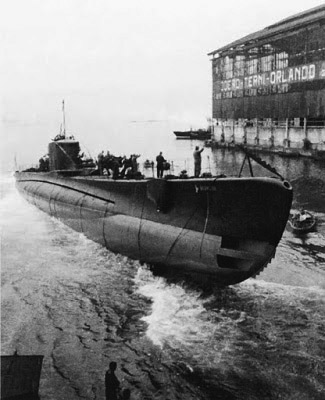
Design of the Marconi class
Development
The Marconi class submarine were a development of previous design, a Bernardis type following the Glauco and Marcello classes. They were of the “semi double hull” type with saddle tanks over an outer hull partly welded and bolted on a pressure hull. They had double internal ballast tank. The design was inaugurated with the 1920s Pisani class. Their pressure hull made of reinforcement rings positioned 500 mm (19.69 in) apart or less later, to which were riveted steel plates in a brick layer fashion, overlapping the other half of the adjacent plates. The shape was a development of previous designs, but the Marconi were the last of their lineage.
The conning tower was a bit smaller than usual, with a central hub housing the two periscopes produced by Galileo of Florence. The forward one was smaller, for attack, the aft one was larger, for exploration. It seems this class reached the pinnacle of the Bernardis type, a derivative of the old Laurenti double hull design. The novelty was an attempt to convert the pressure hull to welded construction which had many advantages, of strenght, as well as of lightness.
But fundamentally they were single-hulled boats with external bulges. The core idea was to improve their submerged speed by making them narrower and longer than at Marcello, and slightly more powerful electric motors were installed. However the speed improvement was minor. The second goal was to increase fuel stowage and range, and that was achieved. In order to preserve stability because of narrower hull beam the aft 100mm/47 guns was aliminated and the Conning tower was made smaller, but it was swapped ultimately to an U-Boat type CT in 1942 for the survivors.
Construction and Names
All six boats were built at CRDA (Cantieri Riuniti dell’Adriatico) di Monfalcone. The venerable yard went back to the 1850s, Trieste was identified as a strategic location for the establishment of workshops and shipyards and port. Within a few years it became the main Austro-Hungarian Empire’s shipyard and industrial centre. The Austrian industrialist Georg Strudthoff set up the “Fabbrica Macchine Sant’Andrea” for the production of steam engines, whereas the “Cantiere San Marco” was established. In 1857, Strudthoff stablished the “Cantiere San Rocco” on the Muggia shore, coupled with a foundry and the “Fabbrica Macchine Sant’Andrea” later merged into the “Stabilimento Tecnico Triestino” (STT) which, in turn in the 1890s, took over the “Cantiere San Marco”, becoming a large conglomerate, also responsible for building the entire Austro-Hungarian Navy. During the First World War, part of the company’s fleet was destroyed along with the Monfalcone shipyards but after the acquisition of Trieste by Italy, the company passed under Italian jurisdiction, renamed “Cosulich Società Triestina di Navigazione”. The yards were rebuilt and expanded. During the intwerwar they added their weight to the efforts to make the Regia Marina the world’s fifth largest.
Alessandro Malaspina: Sailor and Explorer (1754-1810) in the Spanish Armada, helping establishing a colony in the Philippines.
Leonardo da Vinci: Do we even need to present the man ?
Luigi Torelli: (1810 – 1887) was an Italian politician, Minister of Agriculture, Industry and Commerce, helping to reform a unified Italy.
Maggiore Baracca: Ace of aces of the Italian Aviation in WW1. His famous prancing horse emblem was later adopted by a certain daredevil named Enzo Ferrari.
Michele Bianchi: First secretary of the Fascist Party from 11 November 1921 to 4 November 1922.
Guglielmo Marconi: The famous engineer, pioneer of the radio.
Hull and general layout
The Marconi largely followed the Marcello design, itself derived from that of the Glauco class, the ocean-going submarines originally ordered for the Portuguese Navy but later repurchased by the Regia Marina as they were found very promising. They constantly showed excellent nautical qualities and great autonomy, speed and maneuverability. A second class of similar boats with only minimal variations was ordered, and they became the Marcello class, in larger numbers, in fact two series from Cantieri Riuniti dell’Adriatico from 1937 to 1938 and OTO shipyards, La Spezia from 1938 and 1939. The Marcello were ordered in mid-1938 as improved Marcellos. Still ocean-going (or “da grande crociera””) vessels with a single hull with large bulges, and add-on hull blisters on top amidships for better trim balancing.
Dimensions progressed, from 73 metres long overall to 76.5 meters (251 feet), but for a narrower beam at 6.81 meters (22 ft 4 in) instead of 7.2 metres (so and even better 1/11 hull ratio) with a draft of 4.72 meters instead of 5.3 metres. There were concerns over stability though. Displacement, when surfaced rose to 1,195 tonnes (1,214 t) a substantial increase compared to the 1,060-1,063 tonnes of the previous Marcello, and rising to 1,490 long tons (1,514 t) submerged (versus 1,312-1,317 tonnes). Other sources gives 1036 standatd tonnes and 1175 to 1465 tonnes in normal use, the latter underwater.
Like their precedecesors, they could dive to 90-100 metres (300 feet) in service, and beyond if needed, with some cases of 130 meters in emergency. The crew comprised 7 officers and 56 petty officers and sailors. Like their predecessors, they had 8 torpedoes for two quad-tubes arrangement at the bow and stern, but only a single main gun, still 100mm forward; The shap of the conning tower was also revised and simplified for better streamling. Importantly, the longer hull accomodated a bit more fuel oil for an expected range increase. Like the previous designs, they repeated the two upwards folding bow dive planes, two anti-collision bars aft, jettisonable keel. Their reworked semi-enclosed conning tower still had a windowed helmsman post forward, and a narrow deck behind with two twin machine guns on pintles.
Powerplant
Like the previous classes, these were still diesel-electric types, wit two shafts, three-bladed bronze props, driven by a powerplant combining two CRDA 1800 bhp diesel engines rated for a total of 3600 hp for surface running, 17.8 kn (33.0 km/h; 20.5 mph) surfaced. This was completed by two Marelli electric motors rated at 750 hp each for 1500 hp combined and a top speed underwater of 8.2 kn (15.2 km/h; 9.4 mph). As usual, the diesels also were used as generators to reload the batteries. They were two groups of them, probably four series of 16 units located at the bottom of the pressure hull due to their weight in a half-section. The main jettisonable keel was located below.
The speed was slightly above the Marcello’s, they did better on trials. It was also marginally better underwater.
As for the range, a lot of diverging figures were published, but they were mainly two accepted figures resulting on trial’s consumption figures:
-2,900 nmi (5,400 km; 3,300 mi) at 17 knots (31 km/h; 20 mph) surface top speed.
-10,500 nmi (19,400 km; 12,100 mi) at 8 kn (15 km/h; 9.2 mph) at conomical speed; This was better than the Marcello’s 9,760 miles at the same rate.
-8 nmi (15 km; 9.2 mi) at top speed of 8 knots (15 km/h; 9.2 mph) for an escape run
-110 nmi (200 km; 130 mi) at 3 knots (5.6 km/h; 3.5 mph) for creeping approaches.
Despite their welded hull, the test depth was still officially set at 90 m (300 ft)+ but given some wartime events tends to show, their crushing depth was probably well below 170m (600 ft) as shown notably by an incident in which the bow of one reached the bottom at 160+ meters.
Armament of the Marconi class
Like their precedessors, the Marconi were armed by the same arrangement of four tubes forward in the pressure hull and four aft. A total of eight 533 mm (21 in) torpedo tubes pre-loaded at port, for a complement of six spare torpedoes, and grand total of twelve in operations. This was completed by a returned to a single gun arrangement instead of the two adopted for the Marcello class, perhaps out of fear of loosing stability. In any rate this was the very same 100 mm (4 in)/47 caliber gun from OTO, modello 1938. Aft of the conning tower were two twin mounts for 13.2 mm (0.52 in) Breda machine guns.
The artillery planned however, the 100mm/47 Mod. 1938 gun already adopted for brin class, suffered from shortages, so the Marconi class, just elike the Marcello before, started service with the older 102/35 Mod. 1914, and replaced later when the new modello 1938 became available. The choice to relocate the gun, compared to the Brin class was a sensible one, but forced the adoption of a raised gun deck platform like on the Marcellos. It was theorized that the return from two to a single gun was dictated by stability, but it was more likely planned that way due to shortages. The two twin Breda 13.2 mm Modello 1931 heavy machine guns for anti-aircraft defenc on the aft platform lacked room to operate.
Cannone da 100/47 Mod. 1938
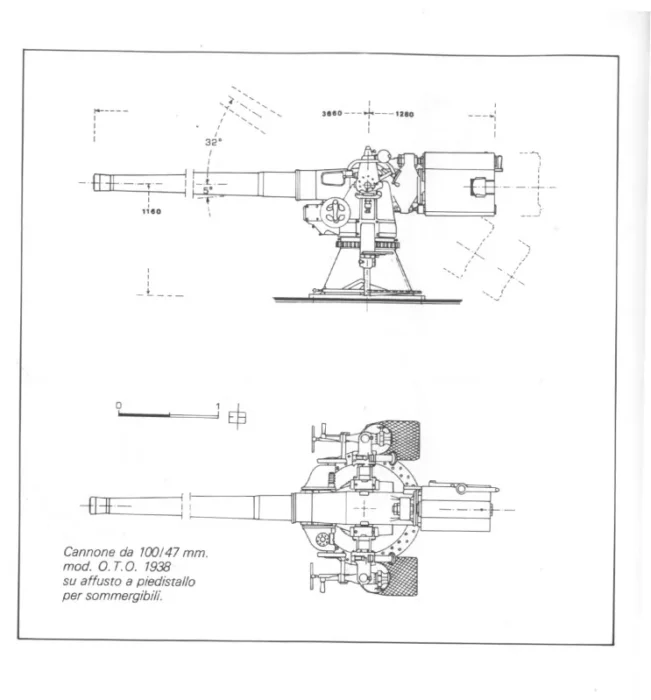
Placed on the forward deck, on a raised platform or bandstand well integrated into the hull, acting as wave breaker, to avoid sea spray. This 100 mm/47 (3.9″) Modello 1938 benefited from developments and improvements made on the earlier Modello 1928, specifically intended for submarines but also used on a few auxiliary vessels, all manufactured by OTO. The Modello 1931, 1935 and 1938 for Submarines were present on the the Glauco, Marcello, Cappellini, Liuzzi, Marconi, Cagni, Sirena, Perla, Adua, Argo, Acciaio and Flutto classes.
Specs
Gun Length oa: 194.5 in (4.94 m), 8-10 rpm.
Fixed Ammunition (HE) 30.4 lbs. (13.8 kg) 2,756 fps (840 mps)
Range: 35° 13,800 yards (12,600 m), OTO 1932
Weight 4.6 tons (4.7 mt) -5 /+32 or 35°.
To compare the previous Cannone da 100/43 modello 1927 had the following specs:
170 in (4.300 m) long, 8-10 rom. HE shells: 30.4 lbs. (13.8 kg), muzzle Velocity 2,625 fps (800 mps)
Elevation -5/+35°. Range: 30.4 lbs. (13.8 kg) HE Elevation/35° 12,000 yards (11,000 m).
AA: 2×2 Breda Breda Mod. 31
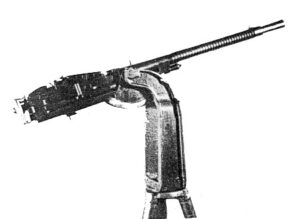
The anti-aircraft defence counted on two twin Breda M1931 13.2 mm L/76 heavy machine guns, placed aft of the conning tower. Each mount weighed 695 kg, but ensured an elevation of -10° to 90°. They fired 125 g unitary rounds, with a muzzle velocity of 790 m/s, maximum range of 6,000 meters and effective range of 2,000 meters. Their rate of fire was 500 rounds/min, so 2000 rounds when both twin mounts fired in concert, however.
14x 533 mm (21 inches) torpedoes
Models available in 1939:
-W 270/533.4 x 7.2 Veloce: 1,700 kg, 7.2 m WH 270 kg, 3,000-4,000 m/50 knots or 12,000 m/30 knots.
-W 270/533.4 x 7.2 “F”: 1,550 kg, 6.500 m, WH 250 kg, speed 3,000 m/43 knots or 10,000 m/28 knots
-W 250/533.4 x 6.5: 1,550 kg, 7.200 m, WH 270 kg, 4,000 m/48 knots or 12,000 m/30 knots.
-Si 270/533.4 x 7.2 “I”: 1,700 kg, 7.2 m, WH 270 kg, speed 3 km/42 kts or 7 km/32 kts, 9,2km/30 knots, 12km/26 kts
-W 250/533.4 x 6.72: 7.2m, WH 270 kg speed 4km/49 kts or 8km/38 kts.
-Si 270/533.4 x 7.2 “M”: 1,7 ton, 7.2 m, WH 270 kg speed 4km/46 kts, 8km/35 kts or 12km/29 kts.
They were also given also a pair of hydrophones.
Modifications
There were few changes. In 1942, Leonardo da Vinci saw the removal of her 100mm/47 to make room for a 1 CA midget submarine for tests, to plan X-Flotilla style night harbour attacks, notably in the far east. In 1943, Luigi Torelli was converted to a transport. Her spare torpedoes removed, the torpedo room cleaned up of any obstruction for cargo, same aft, and the crew reduced. This made for a capacity of around 120 tonnes. Her conversion likely took place essentially in March-April 1943, and involved the elimination of her deck gun, torpedo tubes, part of the battery and many internal appararus. She was stripped bare, and received the callsign of “Aquila VI”.
⚙ specifications |
|
| Displacement | 1,195 long tons (1,214 t) surfaced, 1,490 long tons (1,514 t) submerged |
| Dimensions | 76.5 x 6.81 x 4.72 m (251 ft x 22 ft 4 in x 15 ft 6 in) |
| Propulsion | 2 shaft CRDA diesel engines, 2 × Marelli electric motors |
| Speed | 17.8 kn surfaced, 8.2 kn submerged |
| Range | 10,500 nmi (19,400 km; 12,100 mi)/8 kn or 110 nmi (200 km; 130 mi)/3 knots underwater |
| Armament | 8 × 533 mm TTs (4 bow, 4 stern), 100 mm/47 OTO, 4 × 13.2 mm Breda AA |
| Protection | |
| Test depth | 90 m (300 ft)+ |
| Crew | 57 |
Operation and general evaluation
The Marconi class were probably the best of the Regia Marina’s submarine fleet in WW2. During the Second World War they operated almost exclusively in the Atlantic, where they proved to be the most successful, sinking a combined 39 merchant ships for 222,643 gross tons in the addition of Marconi sinking a destroyer in the Mediterranean. Da Vinci herself contributed for 17 ships and 120,243 TGB. In the spring of 1943, only survivor of the class, Torelli, was converted under German orders to a transport submarine carrying precious materials and plans to Japan and back. She was captured following the armistice and continued to work with the Germans and the Japanese, having on of the most outlandish career of any submarine in WW2.
Marconi class Career
 Guglielmo Marconi (1939)
Guglielmo Marconi (1939)
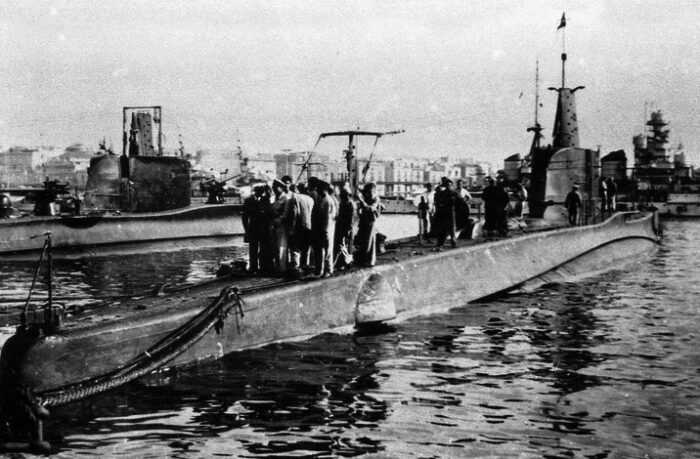
Guglielmo Marconi was laid down on 19 september 1938 at CRDA Monfalcone, launched on 27 july 1939 and commissioned on 8 february 1940. She worked out in March to May, trained in solo and formation like her sisters. In June 1940 Italy was at war and she started her first mission in the Mediterranean under command of Lt.Captain Giulio Chialamberto. On 23.20, 2 July she spotted a group of six British destroyers and attacked, surface, launching two torpedoes at 1000-meter. The destroyers were just underway out of Gibraltar, sailing east. The first missed, probably defective, but the second hit HMS Vortingern (1918 V-W class), causing serious damage. Marconi escaped unscathed, diving quickly when they came back.
At 3:20 a.m. on 11 July, she spotted the destroyers HMS Escort and Forester. The latter was hit and sank slowly (two casualties) and Marconi escaped heavy depth charging, only causing minor damage. This was her one and only Mediterranean mission, over 2,260 miles. She was ordered to the Atlantic. On 6 September 1940 she left Naples and 5 days later passed Gibraltar, arrived on 15 September northwest of the Iberian Peninsula, patrolling for ten days. On 19 September, she spotted and sank a misidentified Spanish fishing boat, the Almirante José de Carranza (330 GRT). On the 29th she joined BETASOM in Bordeaux.
On 27 October, she departed for her first Atlantic patrol on the Scottish coast. On 4 October she was vectored in to a convoy with Alessandro Malaspina, but missed them. On 8 November (or night 6-7 November) she intercepted a message from the steamer Cornish City requesting help, search for her but came across HMS Havelock, escaping depth charges. She had oto crash dive to 125 meters, taking outer and pressure hull damage. Her captain sent oil, debris through the tubes as a deception, convincing the commander of Havelock of her sinking.
Later she spotted and attacked, immobilized and later sank the Swedish motor ship Vingaland (2734 GRT), already damaged by a Focke-Wulf Fw 200. On two torpedoes she made one hit. On the 14th she crossed and attacked a 4000 GRT merchant ship, but the torpedo missed, erratic due to heavy weather. On the 16th she trailed a convoy of 10-20 merchant ships but could not catch them due to the stormy sea. She was back to base on 28 November.
On 16 January 1941 she sailed off Porto, found nothing, patrolled between Lisbon and the mouth of the Tagus but returned on 10 February sailed back due to a large fuel leak, arriving on 17 February.
On Lieutenant Mario Paolo Pollina she sailed out late May 1941 west of the Strait of Gibraltar. On 30 May she ambushed sank the tanker HMS Cairndale (8129 GRT) with four torpedoes and escaped a depth charge attack. On 1 June she sank the trawler Exportador Primeiro (318 GRT), not showing neutrality signs. Later she was vectored on a convoy by radio, finding it after hours and attacked with her remaining torpedoes. She damaged the tanker “Dagestan” (5742 GRT), sank the British steamer Baron Lovat (3395 GRT), Swedish steamer Taberg (1392 GRT) and damaged a fourth 3400 GRT. She escaped the escort and returned to Bordeaux.
Her 5th patrol started in August 1941. On the 11th she was informed of the convoy “HG. 70”, attacked the gunboat HMS Deptford, launchin two torpedoes but lost contact, regained it on 13 August, and torpedoed the Yugoslav steamer Sud (2589 GRT) with three torpedoes, missed, surfaced and tried t gun her dow, but in the meantime U126 arrived and they scored 25 and 33 hits respectively. She was finished off with a torpedo by U126. She was back at Bordeaux on 23 August. Her next sortie was under command of Livy Piomarta in October, near Porto, and southeast of the Azores, then west of Lisbon. On 27-28 October she contacted Betasom to report her position after spotting a convoy and start a chase, 30 miles away, but she was never heard of again.
Among postwar hypothesis, a “blue on blue” with U67 on 28 October but most likely an escort of HG.75 by HMS Duncan -LtCdr Arthur Nichol Rowell) 300 miles north-east of the Azores as stated by uboat.net. Commander Piomarta receied a posthumous Gold Medal for Military Valor. In all she covered 23,346 miles surfaced.
 Leonardo da Vinci (1939)
Leonardo da Vinci (1939)
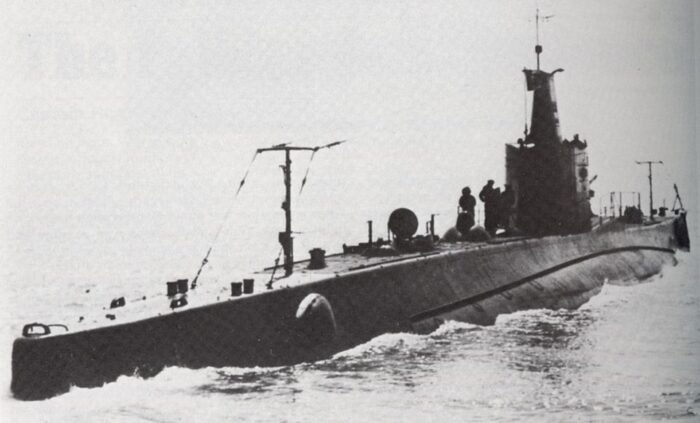
Leonardo da Vinci was laid down on 19 september 1938 at CRDA of Monfalcone, launched on 16 september 1939 and commissioned on 5 march 1940. After training with the 22th SubRon in Naples, she was sent straight away to the Atlantic, leaving Napoli on 22 September 1940 under LtCdr Ferdinando Calda, passed Gibraltar but on 28 September was detected and attacked by two destroyers, emerging unscathed.
On 2 October she spotted a former passenger liner turned AMC Cilicia, launched two torpedoes but missed. She surfaced to attack with her deck gun when spotted by HMS Argus (not by one of her planes) which focused on her her own artillery, forcing her to dive again. She tried to attack the carrier but was forced back by depth charge attacks by Swordfish from Argus. Six days later she launched but missed an armed transport, and on 12 October was informed by Betasom of a large convoy but could not find it. She ended off Lisbon and spotted 80 ships from 21 to 27 October, all neutral, except for an unidentified destroyer, not attacked in doubt. She arrived at Bordeaux on 31 October 1940.
On 21 December she sailed west of Ireland, and on 30 December was vectored in on the damaged steamer Bodnant to finish her off, but the signal was wrong. On 14 January 1941 she sailed north and on 16th attacked bu missed a destroyer, took depth charges, remaining unscathed, back to base on 20 January.
On 3 April 1941, she returned on Irish waters. On 11 April she was on station until the 16th, moved further west, and sailed back on the 27th, arrived on 4 May. On 18 June she left for the Strait of Gibraltar. On 10 June she spotted and attacked the tanker Auris (8030 GRT), launched eight torpedoes, half hitting, sending her down. She was then back to Bordeaux. On 15 September she returned off Gibraltar, and on the 19th dived after an air attack while trailing a convoy, rough seas preventing an attack, she was back on 24 September.
On 6 October under LtCdr Luigi Longanesi Cattani she was prepared for her new mission and departed on 19 November west of the Azores. On 2 December she was back after a serious breakdown, giving up attacking a convoy.
On 28 January 1942 she started her 7th patrol to a new area of operations, northeast of the Antilles, staying there from 13 to 16 February and sailed off Brazil. On 25 February she sank the Brazilian steamer Cabedelo (3557 GRT)and on the 27th, shelled and torpedoed, the Latvian steamer Everasma (3644 GRT) and was back on 15 March.
On 9 May, Da Vinci left Bordeaux for Porto Natal and Pernambuco but was ordered off to the coast of Africa. On 2 June she sighted the large Panamanian schooner Reine Marie Stuart (1087 GRT), sank her surfaced by cannon fire. Two days later she spotted the British motor ship Chile (6956 GRT), sank her the following night with a torpedo. On 10 June, she hit the Dutch motor ship Alioth (5483 GRT) with a torpedo, finished her off wth her cannon as well as the Clan McQuarrie (6471 GRT). She was back in Bordeaux on 1 July, being refueled in between by the submarine Giuseppe Finzi on 20 June.
On 7 October under a refit and Lieutenant Gianfranco Gazzana-Priaroggia she returned off northern Brazil from 2 November, took position near Capo San Rocco. She torpedoed the steamer Empire Zeal (7009 GRT) and finished her off with cannon. On 2-3 November she launched six torpedoes against the US AMC Franz Hals (7176 GRT), damaged, sending a call for help. She was attacked by a seaplane, but escaped.
On 4 November afternoon, she spotted the Greek steamer Andreas (6566 GRT), again, stopped her with a torpedo and finished her with her deck cannon. East of Recife on 9 November she torpedoed the US steamer Marcus Whitman (7176 GRT), again, finished off by cannon fire. She ran out of torpedoes and later sank again the Dutch steamer Veerhaven (5291 GRT), with gunfire, and returned to Bordeaux on 6 December, refulling en route from Enrico Tazzoli off the Canary Islands.
In 1943 she was modified to carry special operations midget craft. On 20 February 1943, relying on Finzi as a refueler, she arrived in the Indian Ocean. On 14 March, she spotted and attacked the Empress of Canada (21,517 GRT), 330 miles southwest of Cape Palmas, Liberia, launched three from her stern tubes, single hit, and she sank. 1892 on board died, with more than 1000 British soldiers, 500 Italian POWs, majority of the 395 victims. Finzi later radioed her about the liner Lulworth Hill (7628 GRT), found her, hit her with two torpedoes, sending her to the bottom, 700 miles west of Angola. Later she was refuelled by Finzi with 90 tons of fuel, 10 of water, 6 of oil, provisions and three torpedoes.
On 5 April she entered the Indian Ocean and reached an area west of Durban, making her greatest tally: 17 April the Dutch steamer Sembilan (6566 GRT), 18th the American steamer Manaar (8007 GRT), 21st John Drayton (7177 GRT), 25 April, British tanker Doryssa (8078 GRT) off Cape Agulhas and on 6 May proceeding to base. Her commander learned by radio he was promoted to corvette captain.
On 22 May she crossed the convoys WS 30 and KMF 15, 300 miles from Vigo. She was spotted at 5,400 yards by HMS Active and the frigate HMS Ness. She dived by took a heavy attack at 11:43 and until 12:12, with the Frigate reporting two explosions in depth, and bot vessels saw all signgs of a sinking. Commander Gazzana Priaroggia received a potrhumous Gold Medal for Military Valor. Fr 12 patrols she made 66,637 miles and amounted the greatest tally of any Italian submarine of the war.
 Michele Bianci (1939)
Michele Bianci (1939)
 Michele Bianchi was laid down on 15 february 1939 at OTO of La Spezia, launched on 3rd december 1939 and commissioned on 15 april 1940. On 27 October 1940 she left La Spezia under Lt.Cdr Adalberto Giovannini for the Atlantic, after first off the Iberian Peninsula, passing Gibraltar on 3 November but was attacked and needed repairs in Tangier, joining there Benedetto Brin (Lt.Luigi Longanesi Cattani) on 12-13 December. On the 18th she arrived at Bordeaux.
Michele Bianchi was laid down on 15 february 1939 at OTO of La Spezia, launched on 3rd december 1939 and commissioned on 15 april 1940. On 27 October 1940 she left La Spezia under Lt.Cdr Adalberto Giovannini for the Atlantic, after first off the Iberian Peninsula, passing Gibraltar on 3 November but was attacked and needed repairs in Tangier, joining there Benedetto Brin (Lt.Luigi Longanesi Cattani) on 12-13 December. On the 18th she arrived at Bordeaux.
On 5 February 1941, she left for her first Atlantic patrol and sank the steamer Belcrest (4,517 GRT) from convoy “SC. 21”. On 23 February she broke the stern of HMS Manistee (5,360 GRT) and dispersed the convoy “OB. 288». She was finished off after already being hit by U107. The next day she launched three torpedoes on Empire Ability and Linaria (3,385 GRT) from convoy “OB. 288” (dipsuted, possibly U96) but she certainly sank the steamer Huntingdon 10,946 GRT) and on 27 February, steamer Baltistan (6,803 GRT) from Convoy “OB. 290”, and attacked bu only damaged an auxiliary cruiser and returned to base on 4 March0
Her second patrol under LtCdr. Franco Tosoni Pittoni in April saw an attack of a convoy but she was showered by about 80 depth charges, light damage. On 4 July she left Bordeaux for an area west of Gibraltar. At 9:41 a.m. still in the Gironde estuary, she was ambushed by HMS Tigris, torpedoed at 9:58 a.m. (six from 2,700 meters). She was hit by two at 10:01 a.m., and sank with all hands. For 7 patrols she had cover 13,220 miles.
 Luigi Torelli (1940)
Luigi Torelli (1940)
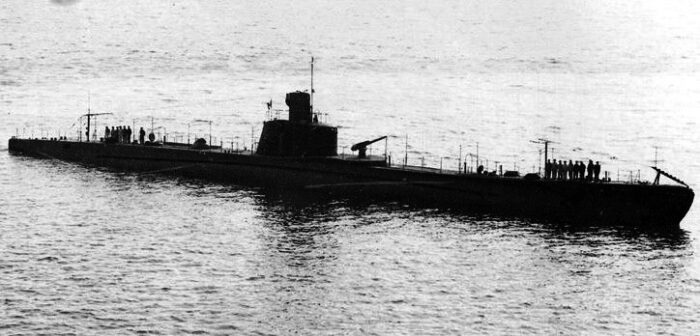
Luigi Torelli was laid down on 15 february 1939 at OTO, launched on 6 january 1940 and commissioned on 15 may 1940. On 22 July she was assigned to the II Submarine Group in Naples, but in reality she remains for preparations at La Spezia until 31 August. Under command of frigate captain Aldo Cocchia, she left instead for the Atlantic. On 8 September she crossed the Strait of Gibraltar and lay in ambush near the Azores, making a few unsuccessful attacks and headed for Bordeaux, entering the Betasom menagerie to be briefed about Atlantic Operations after her arrival on 5 October. Under command of captain Primo Longobardo she operated from 12 to 21 November in Irish waters but had to returned after her Diesels failed.
On 9 January 1941 she left and joined a new operating area not far from before, and on 15 January, sank the steamers Nemea (5101 GRT), Greek, and Brask (4079 GRT), Norwegian. The next day she sank the steamer Nikolaos Filinis (3111 GRT) and on 28 January, the steamer Urla (5198 GRT) as part of Convoy HX. 102. She made a crah dive after being attacked by three destroyers, and was back to base on 4 February 1941. Her bulky conning tower, making her more easy to spot when surfaced the German U-boats, was downsized according to U-Boat designs, and she was the first having this modification, passed on to her sisters. In April-May she patrolled the North Atlantic, but returned to base without a kill.
Under Lieutenant Antonio De Giacomo in July she was sent west of Gibraltar. On the 21st she spotted and sank the Norwegian tanker Ida Knudsen (8913 GRT) underway from Trinidad with 13,000 tons of fuel oil. But like all tankers, she needed four torpedoes (two missed). On 21 September 1941 while trying to attack convoy HG. 73 she was detected and a merciless chase started in which she was depht charges by HMS Vimy and damaged enough to cut operations ando return to Bordeaux for repairs.
In December 1941, Torelli and Pietro Calvi, Giuseppe Finzi and Enrico Tazzoli, U126 and U38, rescued survivors of the German privateer Atlantis and refueling ship Phyton.
On 1 February 1942, she was sent to a new area thansks to har long range between Florida and the Bahamas. 19 days later she sank east of Barbados the steamer Scottish Star (7224 GRT) which lost convoy ONS. 64. On 25 February she torpedoed the tanker Esso Copenhagen (9245 GRT). On 11 March she missed the British Dran. Back to Bordeaux, Commander De Giacomo was awarded the First Class Iron Cross by Admiral Karl Dönitz.
She had a rather long time in shipyard maintenance, and departed on 2 June 1942 under Lieutenant Augusto Migliorini for a new area between the Bahamas and Puerto Rico. On 3-4 June, she was spotted by a Vickers Wellington of the 172nd Group while surfaced 70 miles north of the coast of Spain. She was caught by the “Leigh Light” apparatus, used for the first time. The Wellington later dropped four bombs which shook her hull, badly damaging both her pressure and outer hull. She had to dive and later expedited urgent repairs while underway to the Spanish coast, but she was stranded on rocks, refloated herself, and reach the Spanish port of Avilés, laying in shallow water with serious flooding. The next day she had to leave pending internment by local authorities. On 7 June she was strafed and bombed by a Short Sunderland of the 10th RAAF Group; suffered various injuries and some injuries but continued, also damaging the attacking aircraft.
After a short time it was machine-gunned and bombed by another Sunderland. Damage was terrible. Both her gun and AA MGs were destroyed, her hull was mushed on all sides, seh developed more leaks, and started heeling to port with 12 men thrown into the water by the explosions. Sergeant Fiovo Pallucchini was killed. Her mechanics had a hard time starting the diesels and she limped to Santander, for emergency repairs until 4 July, but she was interned. On 14 July, no agreement was found with Franco but still she was able to leave the dry dock. She ran at full speed, freeing herself from tug’s cables, nearly collided with the gunboat San Martin barring her way before reaching the open sea and managed to return to Bordeaux the next day.
On 16 March 1943 she was caught by another air attack, had several wounded including the commander and some officers and lost Sub-Chief Francesco Lubrano. It was then decided to convert her for transport missions to the Far East, until May. After some training she departed on 14 June with on board mercury, steel, 800 Mauser MG 151/20 aircraft guns, an SG 500 bomb, torpedoes, two sets of Würzburg radars (a total of 130 tons of materials) plus seven passengers including the Japanese Colonel Satake Kinjo, engineer German Heinrich Foders to pass on the latest German radar tech to the Japanese as well as two civilian mechanics and three German technicians. She was under command of Lieutenant Enrico Gropalli. She managed to escape attacks from ships and planes near St. Helena. On 12 August she refuelled from U178 in the Indian Ocean on her way to Sabang (Sumatra) two weeks later, then Penang (Malaysia) and Singapore.
With the September 1943 armistice she was seized by the Japanese but after an agreement, handed over to the Kriesgmarine, and became UIT.25. At first she had a mixed Italo-German crew, headed by Lieutenant (Oberleutnant zur See) Werner Striegler from 6 October, wit the Italian volunteers staying, the others 16, officers mostly loyal to the King, sent to a prison camp.
UIT.25 operated the same way until 10 May 1945, as part of the XII and later XXXIII U-Boot Flotilla under Herbert Schrein, Alfredo Meier, and Commander Striegler again. As Germany capitulated, she was taken over by the Japanese and integrated as I.504 with Japanese officers inc. Lieutenant Hirota Hideo, a few Japanese sailors learning their business from a mix of Italo-Germans… She was caught by US aviation in Kobe and sunk.
 Alessandro Malaspina (1940)
Alessandro Malaspina (1940)
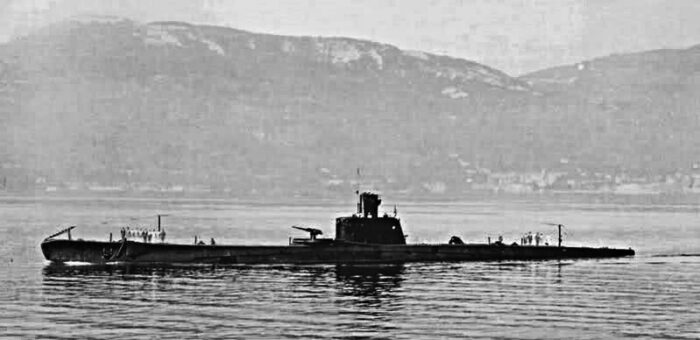
Alessandro Malaspina was laid down on 1st march 1939 at OTO of La Spezia, launched on 18 february 1940 and commissioned on 20 june 1940. The lacck of qualified crews was an issue, and she was worked up during trials. When operational, she was sent to the Atlantic, departing on 29 July La Spezia under command of frigate captain Mario Leoni, passed Gibraltar on 3 September, and fled a destroyer and survived strong currents and rudder failures, which sent her to 152 meters deep (500 ft) wit her bow up even touching the bottom at 165 m (541 ft). She later resurface without damage, showing the effective strenght of her welded pressure hull. On 12 August she started her first patrol and became the first Italian Atlantic sub sinking a ship, launching four torpedoes the British tanker British Fame (8406 GRT from convoy OB. 193) but she was abandoned by the crew. She resisted sinking and was finished off by surfaced gunnery. On 4 September Malaspina arrived in Bordeaux and was visited by Admiral Karl Dönitz.
On 9 October, she departed for her second patrol west of Scotland, trying to locate a convoy signaled by an U-boat. On 20-21 October she launched four torpedoes (1 hit) against 3400 GRT transpoirt, she tried to finish off bu gunfoire but abandoned due to her own staunch gun defence, and bad weather. On 31 October, she spotted a convoy of 7 merchant ships but was kept away by its two destroyers. On 4 November while underway back she tried to sink an auxiliary cruiser, which maneuvered well. Next day she spotted another large auxiliary cruiser which spotted and shelled her, forcing her diving and on 9 November sail back.
After a refit she departed on 5 January 1941 for a third patrol. On 13-24th she was posted on her ambush area west of Scotland,, then moved further south, spotted a destroyer, too fast to attack her. On 28 January she spotted an auxiliary cruiser, also too far away and was back to Betasom on 28 February. On 23 April Lieutenant Giuliano Prini ook command and she started a 4th patrol west of Ireland. She spotted and damaged the passenger steamer Lycaon with a torpedo on 3 May. She attacked a convoy of 20 transports but submerged due to air cover and was tracked down and depht charged for 9 hours by three destroyers. She escaped and by early June while back, she was attacked by a Sunderland.
On 27 June, she left Bordeaux for the west of Gibraltar. On 3 July she spotted a destroyer, too fast. 11 days later she sank the old Greek steamer Nikoklis (3576 GRT) southwest of the Azores and on 17 July the British steamer Guelma (4402 GRT) on the Madeira-Freetown route. Back to base she was modified and refitted until September.
On 7 September she started her 6th patrol, secheduled to be back in October but never heard from again. On 18 November she was declared lost at sea.
Postwar scenario including a sinking by HMS Vimy from convoy HG. 73 on the Gibraltar-Liverpool route on 24 September 1941. An air attack on 10 September by a Short Sunderland. The latter identified a “large U-boat with an unusual purple-green-gray camouflage surfaced at 8 knots”. Three depth charges fell, two hit forward and aft while diving followed by the spotting of a large slick of oil. She was spotted again by another plane the following day, still surfaced. Postwar logs showed no Uboat submarine was in that area at that time.
Before she went down, she was credited three merchant ships from convoy HG. 73 as confirmed by a Luftwaffe flight on 24 September, but without confirmation from the British side. Commander Prini was awarded a posthumous Gold Medal for Military Valor. Her patrols represented 27,281 miles.
 Maggiore Baracca (1940)
Maggiore Baracca (1940)
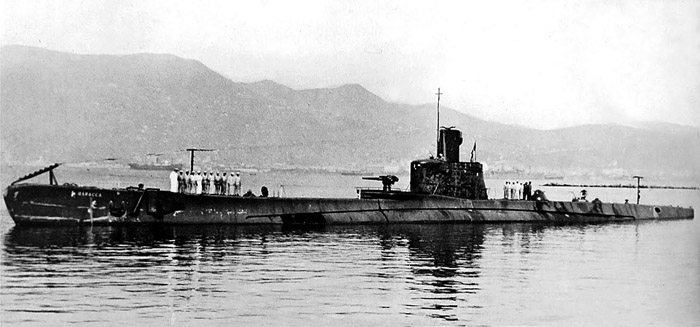
Maggiore Baracca was laid down on 1st march 1939 at OTO La Spezia, launched on 21 april 1940 and commissioned on 10 july 1940. As soon as she was completed, she was ordered to Betasom and the Atlantic. On 31 August under command of Enrico Bertarelli (from 10 July) she departe La Spezia, passed Gibraltar on 7 September and reached an ambush area northwest of Madeira on the 12th and departed on the 30th without results, headed for Bordeaux. On 1 October he came she crossed and inspected underway the Greek steamer Aghios Nikolaos (3687 GRT). Since she was was bound for Belfast she was abandoned by her crew and gunned down. On 6 October she was in Bordeaux.
On 24 October, she departed for a second patrol west of the Scottish coast. On 31 October, she launched a torpedo against a merchant ship, missed, and dived not to be rammed. The next day she spotted a convoy, lost sight, and had several sightings, making a second attack. In service she showed much lower speed than expected with frequent breakdowns and never could match the transports she tried to attack while submerged. Heavy weather also presented surface runs. While underway back to Bordeaux on 18 November she corssed path with the British steamer Lilian Moller (4866 GRT), trainling behind convoy SLS. 53, sank with two torpedoes. From 19 January to 18 February 1941 she had a 3rd patrol, this time in Irish waters, without success. She also was signalled, but never found, a British aircraft carrier in the area. In April, she departed for her 4th patrol west of Lisbon, and back home on 4 May.
In June she made a 5th patrol also without results. On the 27th she spotted a destroyer but could not attack due to rough seas.
Lieutenant Giorgio Viani took command on 13 August 1941. By late August, she left Bordeaux for her last mission, west of the Strait of Gibraltar. On 5 September she shelled and sank the small tanker Trinidad (494 GRT), albeit it was attributed to U95.
Two days later she trailed convoy HG. 72 signaled from Betasom command, but on 8 September, was detected by radar from HMS Croome at 7500 meters and was forced to dive, depth charged and taking serious damage. She lost all power, engines and rudder were out of order, her stern started flooding. She was forced to surface and the crew was ordered to man the cannon to make a stand, soon put out of action. She was opreoared to be scuttled, abandoned, when Croome rammed her aft of her CT, sinking her together with 28 men. 32, including Commander Viani were recovered as POWs by the same destroyer which requiring a month of repairs. In total, Baracca made 23,296 miles.
Read More/Src
Books
Giorgio Giorgerini, Uomini sul fondo. Storia del sommergibilismo italiano dalle origini a oggi
Bagnasco, Erminio (1977) Submarines of World War Two London, Cassell & Co
Brice, Martin (1981) Axis Blockade Runners of World War II Annapolis, NIP
Kafka, Roger & Pepperburg, Roy L. (1946) Warships of the World Cornell Maritime Press
Taylor, J.C. (1966) German Warships of World War II Doubleday & Company
Willmott, H.P. (2009) The Last Century of Sea Power: From Port Arthur to Chanak, 1894-1922 Indiana University Press
Links
betasom.it/ classe-marconi-1938
culturanavale.it
web.archive.org/ archeologiaindustriale.it leonardo da vinci
regiamarina.net/r-smg-marconi/
web.archive.org/ navypedia.org/
it.wikipedia.org Classe_Marconi
en.wikipedia.org Marconi-class_submarine
Videos
Model Kits
Cutaway
on klueser.de, Delphis metal kit 1/700

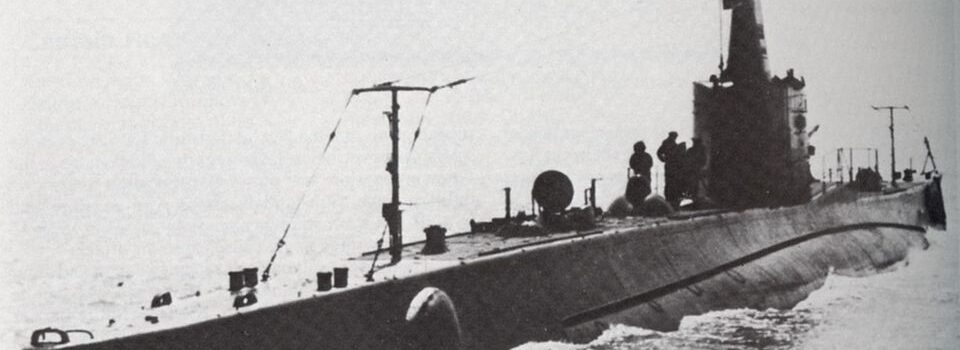
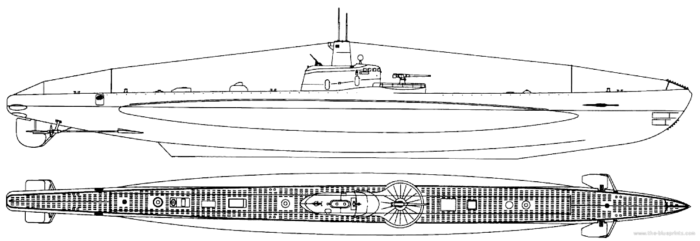

 Latest Facebook Entry -
Latest Facebook Entry -  X(Tweeter) Naval Encyclopedia's deck archive
X(Tweeter) Naval Encyclopedia's deck archive Instagram (@navalencyc)
Instagram (@navalencyc)





 French Navy
French Navy Royal Navy
Royal Navy Russian Navy
Russian Navy Armada Espanola
Armada Espanola Austrian Navy
Austrian Navy K.u.K. Kriegsmarine
K.u.K. Kriegsmarine Dansk Marine
Dansk Marine Nautiko Hellenon
Nautiko Hellenon Koninklije Marine 1870
Koninklije Marine 1870 Marinha do Brasil
Marinha do Brasil Osmanlı Donanması
Osmanlı Donanması Marina Do Peru
Marina Do Peru Marinha do Portugal
Marinha do Portugal Regia Marina 1870
Regia Marina 1870 Nihhon Kaigun 1870
Nihhon Kaigun 1870 Preußische Marine 1870
Preußische Marine 1870 Russkiy Flot 1870
Russkiy Flot 1870 Svenska marinen
Svenska marinen Søværnet
Søværnet Union Navy
Union Navy Confederate Navy
Confederate Navy Armada de Argentina
Armada de Argentina Imperial Chinese Navy
Imperial Chinese Navy Marinha do Portugal
Marinha do Portugal Mexico
Mexico Kaiserliche Marine
Kaiserliche Marine 1898 US Navy
1898 US Navy Sovietskiy Flot
Sovietskiy Flot Royal Canadian Navy
Royal Canadian Navy Royal Australian Navy
Royal Australian Navy RNZN Fleet
RNZN Fleet Chinese Navy 1937
Chinese Navy 1937 Kriegsmarine
Kriegsmarine Chilean Navy
Chilean Navy Danish Navy
Danish Navy Finnish Navy
Finnish Navy Hellenic Navy
Hellenic Navy Polish Navy
Polish Navy Romanian Navy
Romanian Navy Turkish Navy
Turkish Navy Royal Yugoslav Navy
Royal Yugoslav Navy Royal Thai Navy
Royal Thai Navy Minor Navies
Minor Navies Albania
Albania Austria
Austria Belgium
Belgium Columbia
Columbia Costa Rica
Costa Rica Cuba
Cuba Czechoslovakia
Czechoslovakia Dominican Republic
Dominican Republic Haiti
Haiti Hungary
Hungary Honduras
Honduras Estonia
Estonia Iceland
Iceland Eire
Eire Equador
Equador Iran
Iran Iraq
Iraq Latvia
Latvia Liberia
Liberia Lithuania
Lithuania Mandchukuo
Mandchukuo Morocco
Morocco Nicaragua
Nicaragua Persia
Persia San Salvador
San Salvador Sarawak
Sarawak Uruguay
Uruguay Venezuela
Venezuela Zanzibar
Zanzibar Warsaw Pact Navies
Warsaw Pact Navies Bulgaria
Bulgaria Hungary
Hungary

 Bundesmarine
Bundesmarine Dutch Navy
Dutch Navy Hellenic Navy
Hellenic Navy Marina Militare
Marina Militare Yugoslav Navy
Yugoslav Navy Chinese Navy
Chinese Navy Indian Navy
Indian Navy Indonesian Navy
Indonesian Navy JMSDF
JMSDF North Korean Navy
North Korean Navy Pakistani Navy
Pakistani Navy Philippines Navy
Philippines Navy ROKN
ROKN Rep. of Singapore Navy
Rep. of Singapore Navy Taiwanese Navy
Taiwanese Navy IDF Navy
IDF Navy Saudi Navy
Saudi Navy Royal New Zealand Navy
Royal New Zealand Navy Egyptian Navy
Egyptian Navy South African Navy
South African Navy






























 Ukrainian Navy
Ukrainian Navy dbodesign
dbodesign